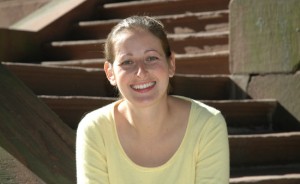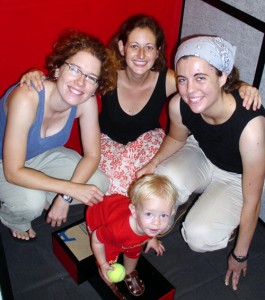Shusterman’s Study Featured in National Academy of Sciences Publication

Nicaraguan Sign Language, developed only 30 years ago by Deaf children in Nicaragua needing a way to communicate, offers insight to ways an adapted language affects thought processes.
In a new study, which was published June 25 in the Proceedings of the National Academy of Sciences, co-author Anna Shusterman, assistant professor of psychology explains how human spatial cognition depends on the acquisition of specific aspects of spatial language.
The article, titled “Evidence from an emerging sign language reveals that language supports spatial cognition,” is co-authored by Jennie Pyers (Wellesley), Ann Senghas (Barnard College), Elizabeth Spelke (Harvard) and Karen Emmorey (San Diego State University).
“The reason we chose to look at navigation was that my colleague Ann Senghas had discovered that older NSL signers had difficulty systematically communicating about the spatial concepts left and right,” Shusterman says. “In our PNAS study, we discovered that they also had trouble with navigation.”
Previous research has suggested that left-right language is related to spatial reasoning and navigation, but there were always reasons to be skeptical.
“In children, language and thought tend to develop together, but it’s hard to know the causal direction,” she says. “In people who speak different languages, we might see corresponding differences in habits of thought, but they might actually be related to culture, not language. The NSL population allowed us to conclude much more forcefully that language supports thought.”

The group tested two cohorts of Deaf signers who acquired an emerging sign language in Nicaragua at the same age but during different time periods: the first cohort of signers acquired the language in its infancy, and 10 years later the second cohort of signers acquired the language in a more complex form.
“We found that the second-cohort signers, now in their 20s, used more consistent spatial language than the first-cohort signers, now in their 30s,” Shusterman says. “Remarkably, their performance on the spatial tasks was strongly related to their consistency of their spatial language.”
Shusterman’s study began in 2005. She’s also analyzing data from a NSL study on perspective-talking with Lisa Drennan ’09.
The study also appeared in a June 22 article in Discover Magazine.

